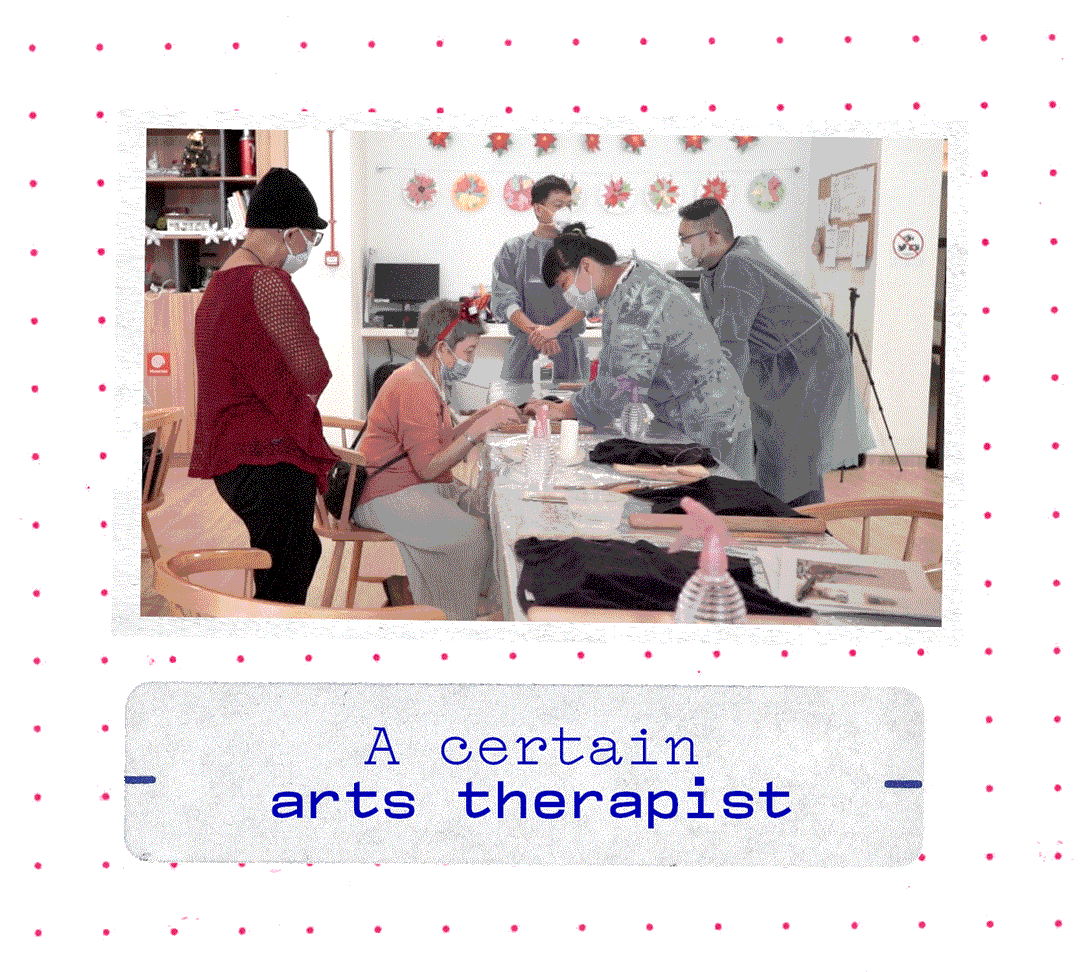





As an art therapist1, I don’t bring in art materials when I visit my patients
Most of the elderly patients here at Assisi Hospice are from the generation that saw art as a luxury
Learning about patients’ association with images gives us an entry point
This is how I would begin the session
Art therapists are generally trained to work with patients’ images

I usually bring in a feeling chart and use it as a check-in tool
And as a quick assessment to see if they are open to imagery
Images like that have been used to describe medical symptoms, anger with spouse, how their whole world is topsy turvy, so it is always associated with bigger questions that they might have
Learning about clients’ association with images gives us an entry point
This is how I would begin the session
Art therapists are generally trained to work with clients’ images
Everything comes from them, because what that image might suggest to you
Might mean something entirely different to them
anGie’s project introduces the house as an archetype to draw out personalised stories
But at the same time, it can be quite vulnerable, as the archetype of the house might mean different things to different persons, it goes back to very early childhood experience
If we try to inject our own meanings into it, we will shake the trust that is already built
So it’s really about directing them back to their own images
Where the images are led by the person
Sometimes there are no conversations
Sometimes I accompany them when they are smoking
Sometimes I just hold their hands
Sometimes I ’ve learnt how they communicate with hand gestures
It’s just about being human but it has somehow ended up being my work
I guess I would describe art therapy as a human service profession
Art gives permission for people to talk about things that they might not get the chance to
~
Art therapy allows you to engage different parts of the human brain
It bypasses your cognitive mechanism, your verbal language brain,
It engages your more emotive side,
Sometimes even through tactile means
The goals are usually set by the patients themselves
Whether it is expressing their feelings to their loved ones
Or thinking about the legacy they want to leave behind
Or even getting a better understanding of their condition
So I don’t walk in with a trolley and predetermine the art that we are going to do
Sometimes patients will get uncomfortable with the works they make
Sometimes they want the work to be discarded, or kept away
They need the distance from the work
But a part of them is in the work
And to be able to let someone else hold on to something that is undesirable for them
Goes back to the trust and the therapeutic relationship
And the empowerment that comes with the patient thinking
I can disassociate myself with this
Sometimes when my patient is suffering I don’t know what to do
I remind myself that the sense of helplessness that the patient is feeling
And the sense of helplessness that I’m feeling might be a parallel experience
So how I'm feeling could inform me about how they’re feeling
And maybe I can reflect on it and check in more
~
I think about impermanence a lot
If you see yourself as finite
Your very own being will be shaken, affected
You need a certain grounding
Whether it is your religion, your spirituality, rituals for yourself
I think embracing the idea of impermanence
Recognizing that this moment will not happen again
Appreciating that this encounter is taking place right now
Gives me a sense of grounding
I learn so much from bearing witness to the different individuals that I journey with
Through their own faith perspective, their own journey of life
I observe how regardless of faith and orientation
My patients find their serenity and peace
How I wish God is someone physical that I can hold on to
But mostly that’s not the case
If I can’t figure out my bigger purpose per se
I go back to my purpose of the day
To be who my patients need me to be
That’s my prayer for when I come to work
1. An interview with Calvin Pang, art therapist at Assisi Hospice, where he takes care of hospice patients as well as day-care patients.




